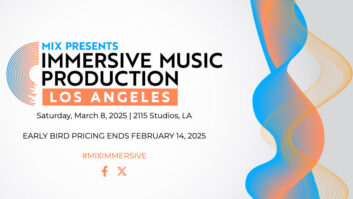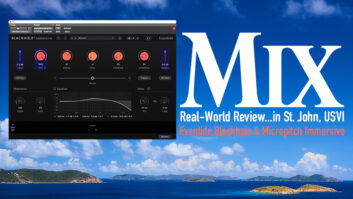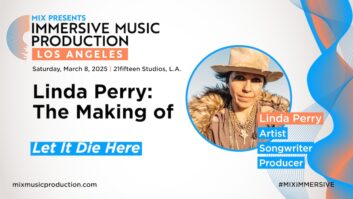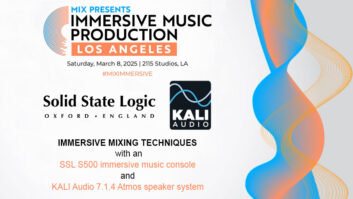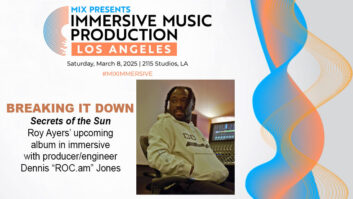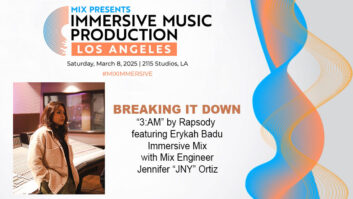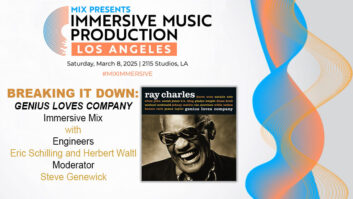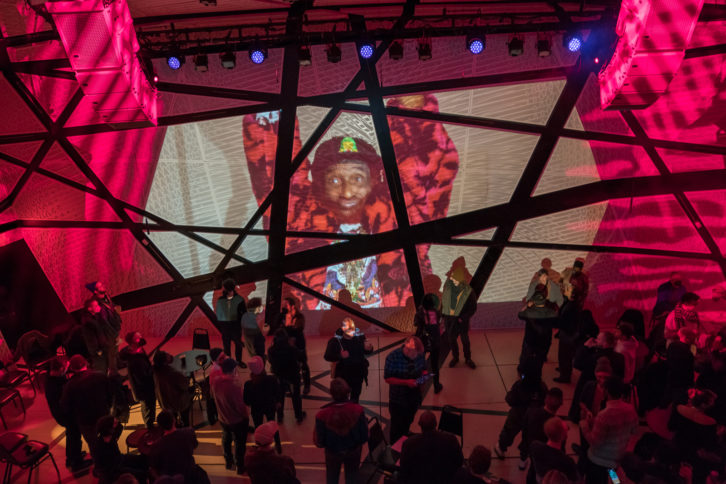
New York, NY (March 21, 2022)—While remembered as an eccentric reggae legend, the late Lee “Scratch” Perry was also an innovative producer/engineer perpetually on the cutting edge when it came to finding new ways to experience sound. Throughout his long career, Perry was always ahead of the curve, whether presaging sampling with his 1968 Jamaican hit “People Funny Boy;” foreshadowing the home studio boom with his 1970s backyard facility, the Black Ark (until he burned it down); or most importantly, building the sonic foundations of dub music with trippy remixes and sound effects.
Across his 85 years, Perry was also astoundingly prolific, ready to collaborate with anyone who could take music and sound in a new direction. In 2020, that led him to team up with German electronic duo Mouse on Mars (Jan St. Werner and Andi Toma) to create new music to be heard in immersive audio. The tracks they created were never publicly heard before Perry’s passing last August, but they finally received a fitting world debut in March this year with Spatial…No Problem: A Lee “Scratch” Perry Immersive Listening Experience, presented three times over two weekends as part of Carnegie Hall’s 2022 Afrofuturism Festival in New York City.
Arguably the only NYC venue with the technical capability to properly present the music was Brooklyn’s National Sawdust, which hosted the tracks’ premiere, presenting them as mixed by Mouse on Mars and then custom-mapped by its director of Sound and Technical Design, Garth MacAleavey, using the venue’s immersive Meyer Sound system.
When National Sawdust opened in 2015, it quickly developed a reputation for presenting avant garde, classical and new music; the possibilities it offered artists only increased in 2019 when a custom LINA direct reinforcement, Constellation active acoustics and Spacemap dynamic spatial audio mixing systems were integrated in the 300-capacity space. The venue’s Constellation system is based around 86 small, full-range loudspeakers and 16 compact subwoofers, with 16 miniature mics providing ambient sensing, sending signals to a D‑Mitri digital audio platform. The Spacemap rig uses the same D-Mitri DSP platform and loudspeakers to offer dynamic multichannel panning throughout the space, with 32 input channels freely assignable to any or all of the discretely addressable loudspeakers. Spacemap panning can be pre-programmed or implemented on the fly using an iPad interface—and that’s exactly what MacAleavey did for the Perry project.
Mix Regional New York City: National Sawdust
“When it was installed in 2019, we got to a point where we could make the room sound incredible— and then the pandemic shut everything down,” said MacAleavey. “Coming out of that, this Lee ‘Scratch’ Perry idea started coming towards us from Carnegie Hall and the Afrofuturism Festival. We got excited because this is a legendary producer and reggae artist, and a pioneer—someone who’s always been breaking the mold. We really wanted to do this show, and there was a lot of talking and pre-production, but the truth was that we didn’t know if the show was going to happen! Mouse on Mars, Sawdust and Carnegie Hall all wanted to do it, but we didn’t know if Lee’s estate was going to OK the project. Finally, we got the green light and Mouse on Mars jumped into the studio.”
Based in Berlin, Mouse on Mars wasn’t able to come to New York for the project, and the duo had only three days of studio time to sift through three weeks’ worth of sessions with Perry to cull the best moments for the show. Cutting, mixing and automating what they could on a 14.4.2 Spacemap system they had access to, Mouse on Mars mixed everything down to 32 outputs—the current limitation for National Sawdust’s Spacemap system. They entered the studio hoping to compile 30 to 45 minutes of usable material; the result was 80 minutes, spread across 55 tracks.
Mouse on Mars sent the resulting Logic Pro project to Steve Ellison, Meyer Sound’s Director, Spatial Sound based in Los Angeles, who opened the project, verified it on a 5.1 system and helped prepare the automation for Sawdust’s system. With different versions of the session flying back and forth, the process became quite collaborative, until ultimately MacAleavey had to go into the physical National Sawdust space and start mapping the session inside the physical space.
“I had to route everything, and I used our RME MADI interface, which was great,” said MacAleavey, “because all I had to do was plug a couple of BNC cables into our DiGiCo SD8-24 console and boom—I could just cascade all of my tracks into the desk. We’ve got a SD-Rack backstage that has 48 channels of XLR inputs and a ton of AES outputs to feed the Meyer systems—so 32 was as many AES outputs as I could dedicate, because I’m still driving the main PA, the subs and the side cars.”
MacAleavey set up in the center of the roughly 30-by-50-foot room and got to work, spending eight hours daily across four-and-a-half days soloing and listening to tracks. “I had to dig and find where certain sounds were happening, and then pull apart the mixes and spatialize it in the room in a way that I thought would complement the work,” he explained. “I took the direction [for spatialization] that Mouse on Mars were going for, which typically was some wide panning— they had a lot of great stereo drum tracks with great panning effects and synth panning effects. Using Spacemap and the Oscar plug-in that can control the X, Y and Z information, we were able to automate the entire experience. I was generally working with the mid-laterals and the overheads, which I wanted to do because that translated well from the setup that they were using.”
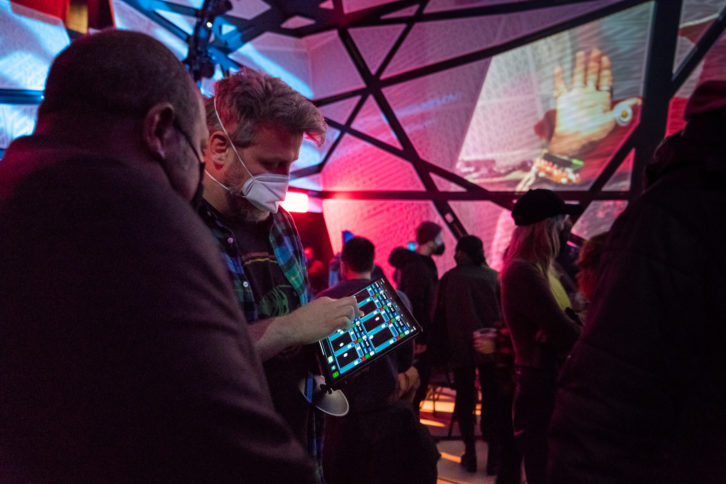
The shows were presented as listening events rather than performances, but audiences still got to enjoy visual flourishes like moody lighting, video clips from the recording sessions and more. While there was some reggae and dub in the mix, the tracks were surprisingly diverse, serving up Afrobeat, Post-Punk, Krautrock, psychedelic space-outs and more. While MacAleavey had spent a week working with the tracks, he nonetheless did a fair amount of walking around with an iPad touchscreen controller during the show, tweaking levels and doing a little bit of live spatialization. “What I wasn’t expecting,” he said in retrospect, “was that people were really interested in what I was doing! That was a really cool aspect of the project that I didn’t think about at the time.”
In the wake of his week of spatializing the music, MacAleavey also discovered that when it comes to mixing for an immersive environment, less is often more: “Not everything has to move all the time. Just expanding the mix into an exploded, 360-degree environment can be an incredible experience. Moving sounds around is cool, but sometimes just hearing 12 horns expanded, raining down around you, with all of this spatialized rhythmic information is amazing all by itself. It’s totally new-frontier stuff.”
